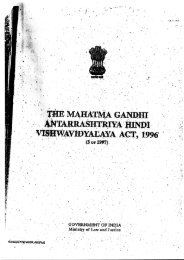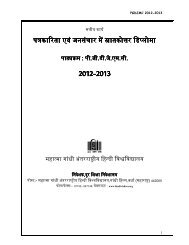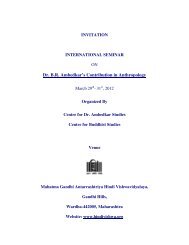Mamta Kalia
Mamta Kalia
Mamta Kalia
You also want an ePaper? Increase the reach of your titles
YUMPU automatically turns print PDFs into web optimized ePapers that Google loves.
Discourse<br />
POST MODERNISM: A CRITICAL<br />
APPRAISAL<br />
Subhash Sharma<br />
Obviously post-modernism refers to something of a process ‘after’<br />
modernism. But unfortunately it is a highly contested conception,<br />
often meaning contradictory things to different scholars and<br />
practioners, like a Hindu mythological story of seven blind persons<br />
who described different things by touching different parts of an<br />
elephant, but could not recognise as an elephant. The term ‘postmodernism’<br />
was first used by John Watkins Chapman in 1870’s<br />
to mean post-impressionism. Later, in 1934, it was used to refer<br />
to a reaction against the difficulty and experimentalism of modernism.<br />
In 1939, Arnold J Toybee used it to mean the end of the ‘modern’<br />
western bourgeois order dating back seventeenth century. Further<br />
in 1945, Bernard Smith used it to mean the movement of socialist<br />
realism in painting. Later, in 1959, Irving Howe and in 1960<br />
Harry Levin used it to mean a decline in high modernism. Further<br />
in different disciplines and genres of art the term was used to<br />
mean varyingly. For instance, in the arena of architecture, the<br />
post-modern architecture turned to the vernacular and history<br />
re-introducing ‘a humanising narrative’. However, as points out<br />
Hans Bertens (‘The Idea of the Postmodern’, 1995), for most of<br />
American cities, post-modernism is a move away from the narrative<br />
and representation – a move towards a radical aesthetic autonomy,<br />
towards pure formalism. Actually the functional and formalized<br />
shapes and spaces of the modernist movement were replaced by<br />
the diverse aesthetics; styles collide, form is adopted for its own<br />
sake, and so on. Philip Johnson, John Burgee, Robert Venturi,<br />
Frank Gehry etc. are post-modern architects.<br />
April-June 2010 :: 67

















